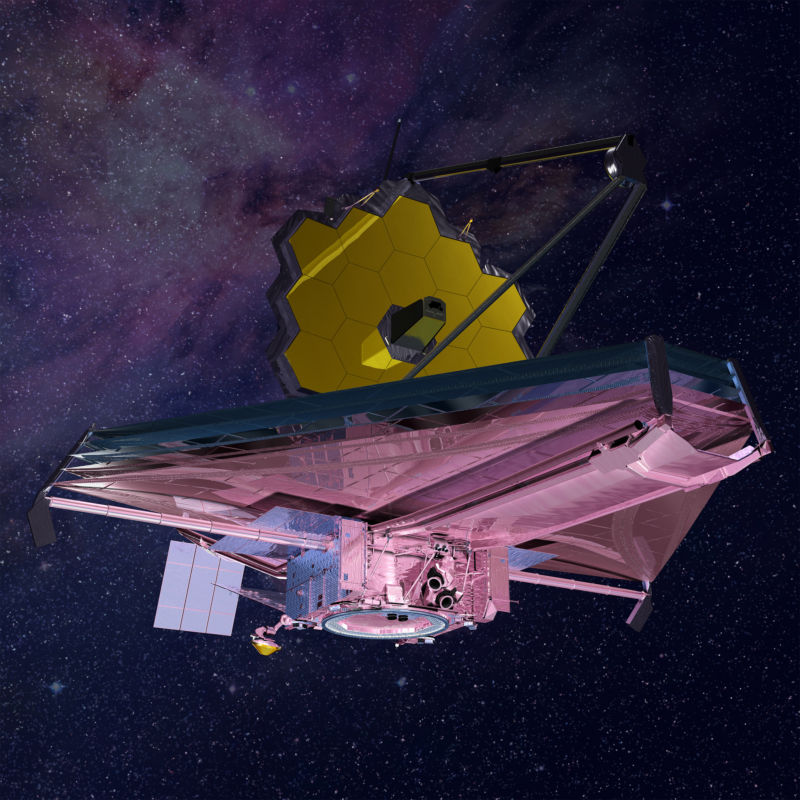Webb continues to unfold; has enough fuel for over a decade

Enlarge / The multi-layer sun shield is in the process of unfolding this week. Right now the portion extending forward from the telescope body is extended; the sides will come later this week. (credit: NASA)
When fully operational, the James Webb Space Telescope will be enormous, with a sun shield measuring 12 x 22 meters. Obviously, however, it can't be sent to space in that configuration. As a result, the tension of the launch will be followed by weeks of equally nerve-wracking days as different parts of the observatory are gradually unfolded.
The good news is that the process has already started, and everything has gone off without a hitch so far. Meanwhile, NASA has analyzed the results of the initial firings of the observatory's on-board rockets, and determined that it will have enough fuel for "significantly more" than a decade of operations.
Good news on fuel
The Webb will orbit a position called the L2 Lagrange point, a site about 1.4 million kilometers from Earth. Getting into that orbit requires moving outside the plane defined by the Earth's orbit around the Sun, and arriving at shallow angle so that the Webb doesn't overshoot its target.
Read 8 remaining paragraphs | Comments
source https://arstechnica.com/?p=1822767